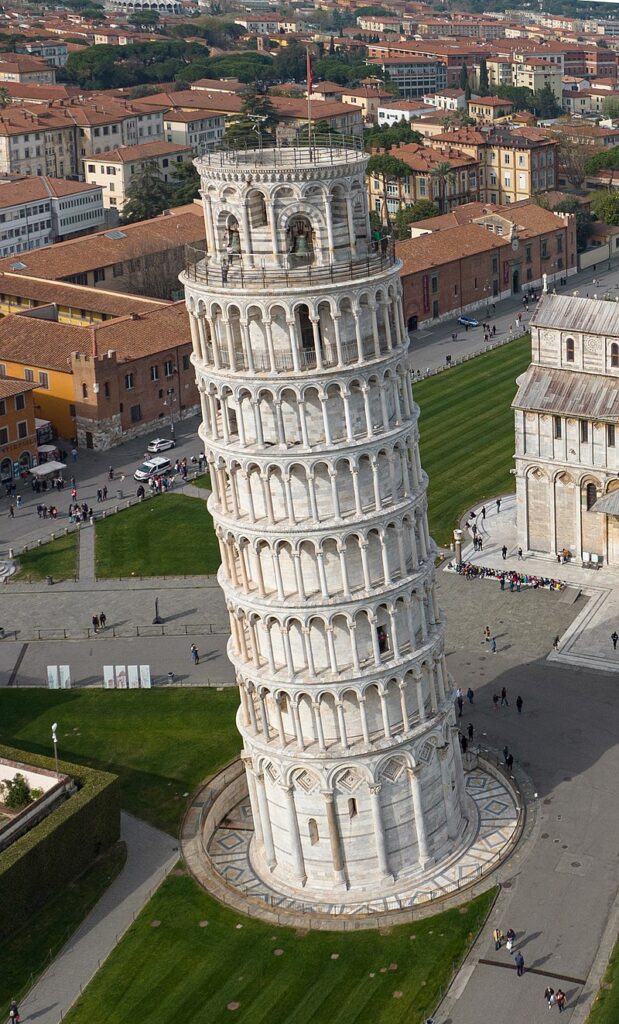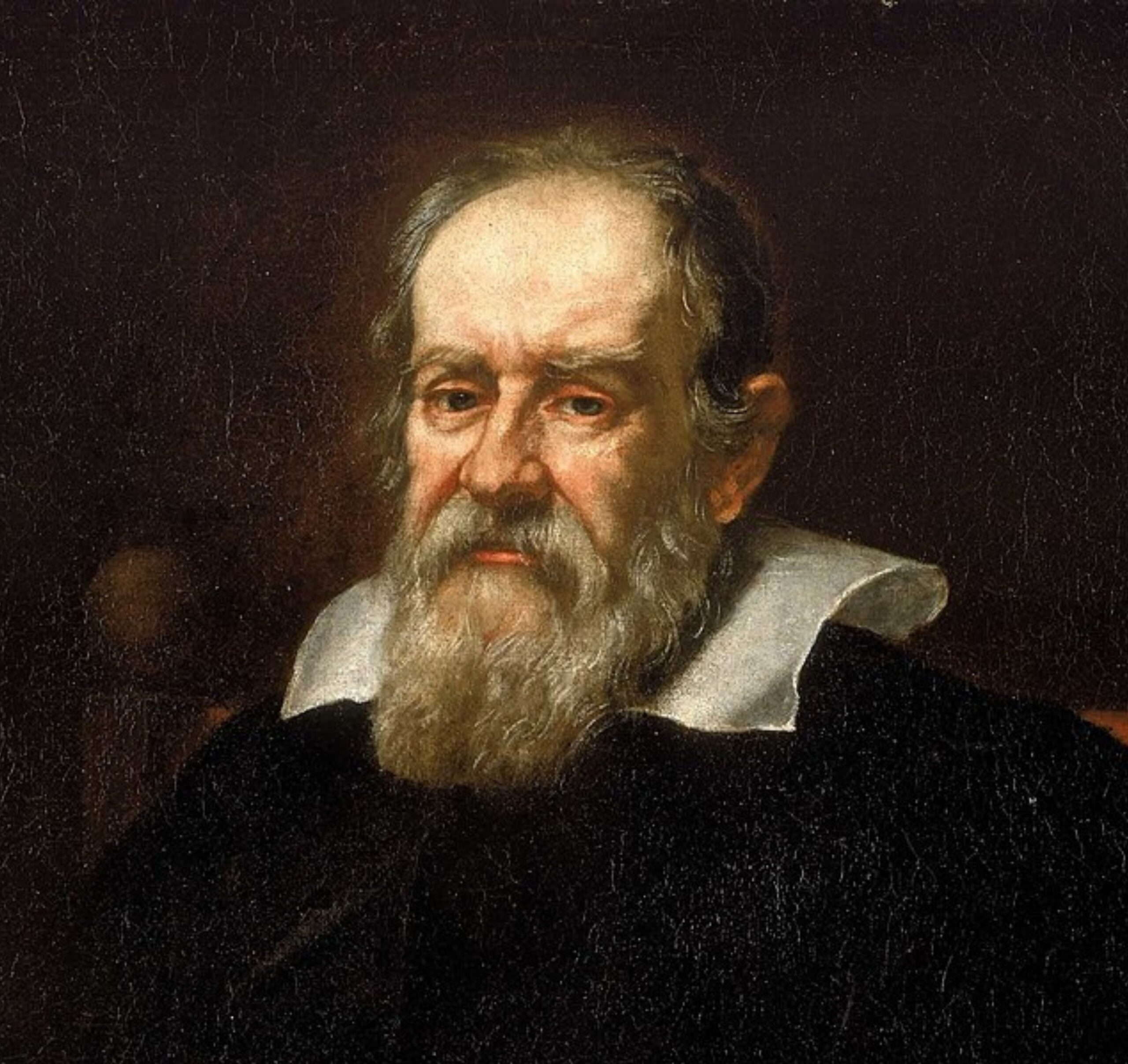Roll up, roll up for the story of Galileo Galilei- not only one of the most satisfying names to say but someone who played an important role in the history of the world.
Galileo Galilei’s story started on the 15th of February 1564 when he was born near Pisa in Italy. You’ll have probably heard of Pisa- it has a certain leaning tower in it.
Here’s a summary video about why the Tower of Pisa (or the leaning tower of Pizza) actually leans.
And just in case my terrible animations didn’t give you an idea of what the tower looks like. Here’s a picture.

Galileo was the oldest of 6 children, though 2 of his siblings sadly died in infancy.
He remained in Pisa after his family moved to Florence when he was 8 years old, but joined them 2 years later at the age of 10.
Galileo had considered becoming a priest when he was a child but his father persuaded him to join the University of Pisa and study medicine.
History tells the story that Galileo accidentally attended a lecture on geometry. I’m not quite sure how you accidentally attend a lecture, but there you go. I suppose there are worse accidents to happen.
Those who practised medicine earnt more than mathematicians so Galileo’s father had been reluctant to let his son study mathematics, but after Galileo “accidentally” attended the lecture on geometry, he did everything in his power to persuade his father to let him study maths instead.
It must have worked because he became a professor of mathematics at the university in 1589.
Astronomy discoveries
Among his most notable discoveries were those he made in the vast void of space. For context, back in Galileo’s time, most people thought that the Earth was the centre of the universe. They thought the stars, planets and everything else in space were orbiting around the Earth.
We now know that’s false and that the Earth isn’t the centre of anything- let alone the universe. But people believing that it was when Galileo was making his astronomical discoveries meant he annoyed many people – most notably the Catholic Church… but that’s a story I’m not going to get into.
I think I should also mention that Galileo didn’t actually invent the telescope as he’s sometimes wrongly credited with doing, though he did go a long way to increasing its power he didn’t actually invent it.
So, what did Galileo discover?
The moon has craters and mountains– This is common knowledge nowadays but not back in the 1500s. Galileo used the size of shadows to estimate the size of the mountains and found them to be similar heights to those on Earth.
The moons of Jupiter– Jupiter has somewhere between 85 and 95 moons and Galileo didn’t discover all of them. But he did discover four of them. They are now known as the Galilean moons. Io, Ganymede, Europa and Callisto. Ganymede is the largest moon in the Solar System and is actually bigger than the planet Mercury.
Stars in the Milky Way- The Milky Way is the galaxy that our Solar System is part of. Galileo discovered that there were more stars in our galaxy than just the Sun.
The phases of Venus- You might be more familiar with the phases of the Moon- or more commonly, full moon, half moon etc. Sometimes when you look up at the night sky and look at the Moon you will sometimes see it as a thin sliver and other times as a completely round.
Galileo observed Venus through his telescope and discovered that it had the same sort of phases.
The cannonballs and the tower
When I was at school I remember hearing the story of Galileo and how he dropped cannonballs from the top of the leaning tower of Pisa. I just took the story as true, but now I’m looking into it a little bit more, I’m discovering that it might not actually have been true. So what is correct to say is that Galileo is “said” to have dropped cannonballs from the top of the leaning tower of Pisa.
Until we have a time machine or find a definite source of information then we will never know if it actually happened. I personally like to think it did- but it could have been a thought experiment.
Years before Aristotle (A Greek Philosopher who died around 322 BCE) said that objects with more mass would fall quicker than an object with a smaller mass. Mass is basically the amount of stuff an object is made up of. So I have a bigger mass than a baby because there’s more stuff inside me.
In many ways Aristotle’s theory made sense. A bigger mass meant that gravity had more to grab hold of so would pull it to Earth quicker. But we now know that gravity affects everything exactly the same. It’s fairly morbid but I would fall at the same speed as a baby if we were both chucked off a cliff- not that I hope that ever happens.
Galileo, however, disagreed with Aristotle.
And the experiment Galileo may or may not have done proved that the heavy and light balls would fall at the same time and I honestly love the idea of just walking through Pisa one day and a cannonball landing next to you after being chucked out of a tower.
To prove the theory is definitely correct a hammer and feather were dropped at the same time on the Moon’s surface – check out the video here. (link will take you to YouTube). Spoilers- they hit the Moon’s surface at the same time.
family life
To finish off I thought I’d mention the family life of Galileo.
He had three children- all outside of wedlock- with Marina Gamba. Two daughters and one son. Both his daughters spent most of their lives in the convent of San Matteo in Arcetri.
For general information, a convent was a community of monks, priests and nuns.
His son was a musician.
Our story ends on the 8th of January 1642 when Galileo died at the age of 77 in Tuscany.
And there we have the streamlined story of Galileo Galilei, I hope you enjoyed it!
what to read next
If you have enjoyed this not-so-romantic blog then here are some ones I recommend you read next.
